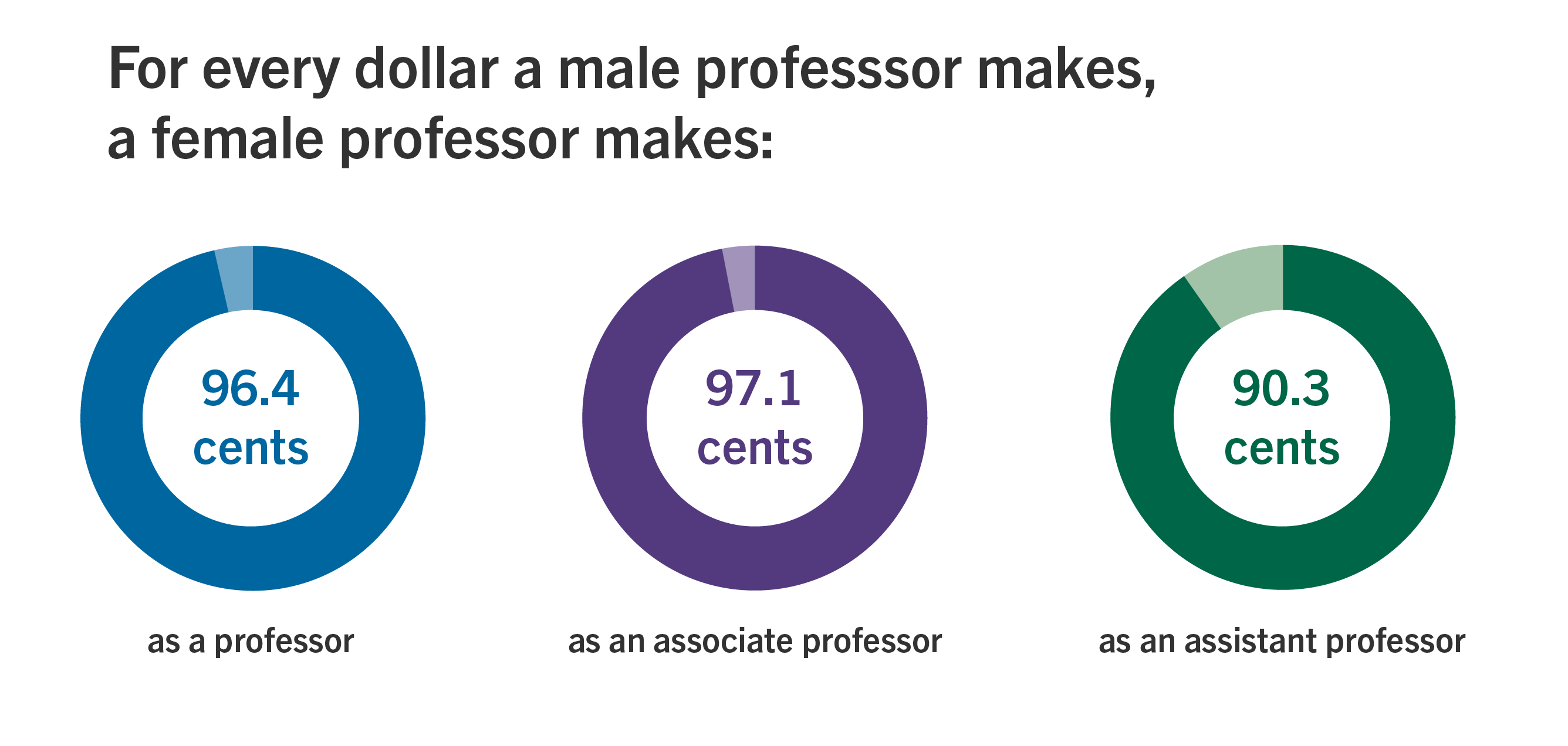While women continue to make up a smaller portion of faculty than men, they are making roughly the same amount of money as their male counterparts, according to new salary data presented at a Faculty Senate meeting last week.
Female professors, on average, made at least 90 cents for every dollar men made during the 2018-19 academic year, with associate professors making the most equal salaries at 97 cents for each dollar, according to the salary data. Officials and higher education administration experts said the persistence of a gender wage gap is a common problem across universities – but efforts to hire and retain women in associate and assistant positions will improve numbers in the future.
The biggest sex-based wage gap existed between assistant professors, where female faculty made about 90 cents for a man’s dollar. But the number of women assistant professors outnumbers men in those positions 135 to 114, according to the salary data.
Salary equity ratios between full professors averaged at about 96 cents for every man’s dollar, but the number of male professors is more than double the number of women. There are 109 female professors and 264 men who average salaries of $178,000 and $185,000, respectively, according to the salary data.
Provost Forrest Maltzman said that while there are fewer women holding full professor positions, the increasing number of female assistant and associate professors will move up in the ranks and eventually take on more professor spots.
The gender gap in full professors has been closing over the years, with women comprising nearly 47 percent of professorships in 2018 compared to 40 percent in 2009, according to data presented at the Faculty Senate meeting.
“Women are earning PhDs at a much higher rate than existed several decades ago and are becoming a much larger share of a proportion of our faculty,” Maltzman said in an interview.

Graphic by Emily Recko | Graphics Editor
Source: Annual Report on Core Indicators
Full professors in the Elliott School of International Affairs had the most equal salaries, with seven female professors averaging roughly $176,000 and 25 male professors averaging $179,000. The biggest gap existed in the business school, where 10 female professors averaged $1.18 for 29 men’s dollar.
Female law school faculty have seen the largest increase in average salaries compared to their male counterparts since last year. In 2017, female associate professors in the law school made 77 cents to every dollar and female full-time professors made 84 cents to every dollar, but this year, female professors took home on average $1.02 for every dollar, according to the data.
Higher education experts said closing the salary gap is a positive sign, but the relatively small number of female faculty demonstrates that the administration can still work to hire and retain women.
Deb Vagins, the senior vice president of public policy and research at the American Association of University Women, said administrative initiatives like salary audits and publicizing data can help ensure that women are paid fairly.
“The one thing that a lot of institutions have is more pay transparency,” she said. “We certainly recommend that salaries – the gender and race breakdown – be public, and we need more broken-down data.”
She added that the higher number of women in assistant and associate positions could be linked to a lack of female leadership. If women do not have much representation in full professorships, they might find it challenging to advance, she said.
Linda Grant, an emeritus professor of sociology at the University of Georgia who has researched gender inequity in higher education, said universities have said for decades that female assistant and associate professors will move up into full professor roles, but many schools still struggle to balance the gender gap.
She said that while salary equity is promising, women still face other forms of discrimination in the workplace and are often not taken as seriously as their male counterparts, preventing them from moving up.
“The wage gap has existed as long as people have kept data,” she said. “Ninety-one cents on the dollar, that’s better than the labor market as a whole.”





